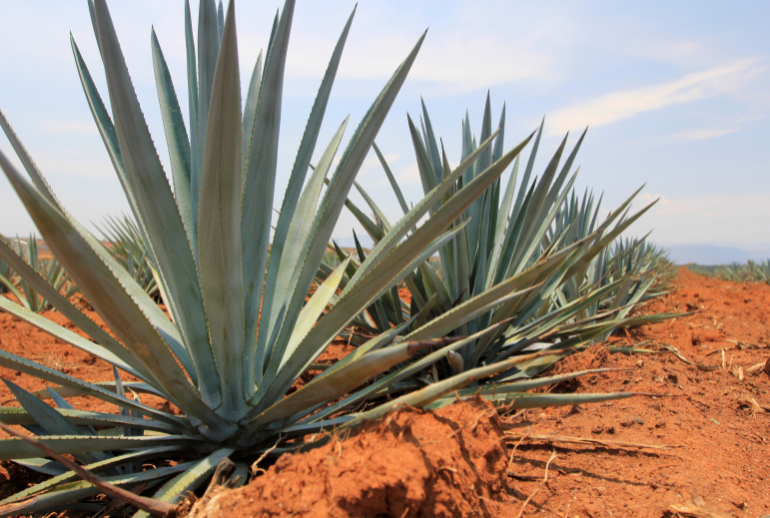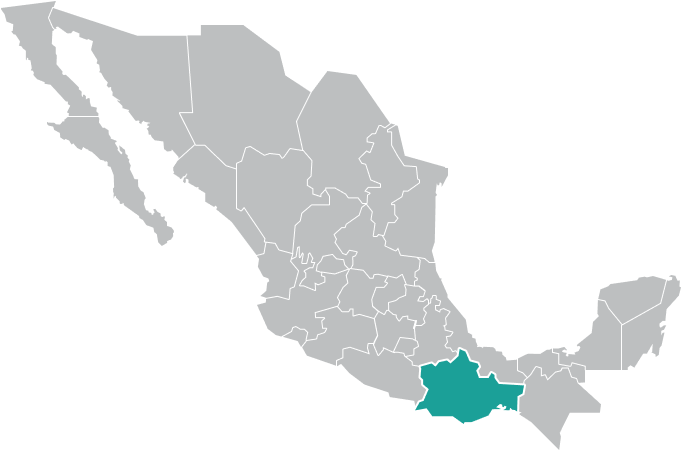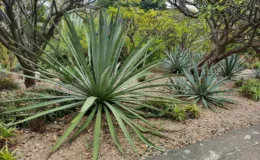Welcome to the captivating world of mezcal, where the smoky allure of agave spirits takes center stage. In this article, we’ll embark on a journey to explore Espadín mezcal, a beloved expression that serves as a gateway into the realm of this unique Mexican libation. Whether you’re a mezcal novice or an enthusiast seeking deeper knowledge, join us as we uncover the intricacies of Espadín mezcal, its distinct characteristics, and how it compares to other prominent agave varieties.
What is espadin mezcal?
A Versatile Delight Espadín mezcal derives its name from the agave variety used in its production: Agave angustifolia, commonly known as Espadín. As the most widely cultivated agave for mezcal production, Espadín plays a significant role in shaping the mezcal landscape. Its accessibility, relatively short maturation period, and balanced flavor profile have made Espadín mezcal a popular choice among both producers and consumers.

The flavor profile of Espadín mezcal is a harmonious blend of earthy, smoky, and fruity notes. It often exhibits aromas of roasted agave, citrus, tropical fruits, and subtle floral undertones. The intensity of smokiness may vary among different producers, providing a spectrum of flavors within the Espadín mezcal category. The balance and versatility of its flavor profile make Espadín mezcal an excellent choice for both sipping and mixing in cocktails.
Espadín Mezcal Production Process and Flavor Profile
Espadín mezcal is crafted using traditional methods that have been passed down through generations. The hearts of the Espadín agave, known as piñas, are harvested and roasted in underground pits, imparting the characteristic smoky notes that mezcal is renowned for. Once cooked, the piñas are crushed and fermented, usually in wooden vats, before undergoing distillation in copper or clay stills.
Where Espadín is Grown
Espadín agave thrives in various regions of Mexico, with the state of Oaxaca being a prominent hub for its cultivation. The rich soil, favorable climate, and diverse microclimates in Oaxaca contribute to the exceptional quality of Espadín mezcal produced in this region. Other areas known for Espadín production include Guerrero, San Luis Potosí, and parts of the southern states of Mexico.

Comparing Espadín to Other Agave Varieties
To truly appreciate Espadín mezcal, it’s essential to explore the contrasting characteristics of other notable agave varieties used in mezcal production. Let’s delve into the nuances and unique flavors of Tobalá, Tepeztate, Tobaziche, and Arroqueño, alongside our focus on Espadín:
Tobalá
Considered a gem among agave varieties, Tobalá (Agave potatorum) is highly coveted for its scarcity and complex flavor profile. Unlike Espadín, which matures in around six to eight years, Tobalá requires up to 15 years to reach maturity. Tobalá mezcal offers delicate herbal and floral notes, with a smooth and silky texture that sets it apart from the bolder character of Espadín.
Tepeztate
Tepeztate (Agave marmorata) is a wild agave species that thrives in rugged, mountainous regions. Its distinctive long, thin leaves yield mezcal with a robust and earthy character. Tepeztate mezcal boasts a complex flavor profile, often exhibiting notes of roasted agave, green herbs, and hints of tropical fruit. Due to its scarcity and longer maturation period (15-30 years), Tepeztate mezcal tends to be more expensive than Espadín.
Tobaziche
Tobaziche (Agave karwinskii) is a visually striking agave variety characterized by its large, broad leaves. The mezcal produced from Tobaziche offers a distinctively herbaceous and spicy profile, with notes of eucalyptus, black pepper, and citrus. Similar to Tepeztate, Tobaziche requires a longer maturation period (15-25 years), contributing to its elevated price range compared to Espadín.
Arroqueño
Arroqueño (Agave americana var. oaxacensis) is a majestic agave species known for its immense size and long maturation period (15-25 years). Mezcal crafted from Arroqueño agave presents a rich and complex flavor profile, featuring notes of smoke, roasted agave, tropical fruit, and a pronounced minerality. The intense flavors and rarity of Arroqueño agave make this mezcal variety highly sought after.
Espadín mezcal, in contrast to these rarer and more complex agave varieties, offers a balanced and approachable entry point into the world of mezcal. Its shorter maturation period and wide availability contribute to its affordability and accessibility.
Popular Espadín Mezcal Brands
Numerous mezcal brands produce exceptional Espadín expressions that showcase the unique characteristics of this agave variety. Here are a few notable brands:
Del Maguey: Known for their commitment to traditional production methods, Del Maguey offers an exquisite Espadín mezcal that exemplifies the flavors and essence of the agave. Each bottle captures the heritage and craftsmanship of mezcal production.
Los Danzantes: Los Danzantes produces an array of artisanal mezcals, including a captivating Espadín expression. Their mezcal exhibits the agave’s distinct flavors, striking a balance between smokiness, sweetness, and herbal notes.
El Silencio: El Silencio has gained popularity for their Espadín mezcal, which embodies the traditional spirit of Oaxaca. It features a smooth and complex palate with hints of smoke, citrus, and roasted agave.
Mezcal Amaras: Mezcal Amaras produces a range of mezcal expressions, with their Espadín mezcal capturing the agave’s essence beautifully. It offers a well-rounded flavor profile with notes of cooked agave, tropical fruit, and a hint of smokiness.
Versatile Cocktails with Espadín Mezcal
Espadín mezcal’s balanced flavor profile lends itself well to a wide range of cocktails. Here are a few popular options that highlight the versatility of this spirit:
Smoky Paloma: Combine 2 oz of Espadín mezcal, 1 oz of fresh grapefruit juice, ½ oz of lime juice, and ¾ oz of agave syrup in a shaker with ice. Shake well, strain into a glass over ice, and top with soda water. Garnish with a grapefruit wedge.

Oaxaca Mule: In a copper mug filled with ice, mix 2 oz of Espadín mezcal, ½ oz of lime juice, and 4 oz of ginger beer. Stir gently and garnish with a lime wheel.

Mezcal Sour: Shake 2 oz of Espadín mezcal, 1 oz of fresh lemon juice, ¾ oz of simple syrup, and ½ oz of egg white in a shaker without ice to emulsify. Add ice, shake again, and strain into a coupe glass. Garnish with a few drops of Angostura bitters on top and a lemon twist.

Mezcal Negroni: Put an intriguing twist on the classic Negroni by substituting gin with Espadín mezcal. Mix 1 oz of Espadín mezcal, 1 oz of Campari, and 1 oz of sweet vermouth in a mixing glass with ice. Stir well and strain into a rocks glass over a large ice cube. Garnish with an orange twist.

Conclusion
Exploring the unique flavors and versatility of Espadín mezcal will surely enhance your appreciation for this agave spirit. Its balanced profile, approachable price point, and wide availability make it a fantastic choice for both newcomers and seasoned mezcal enthusiasts.
Remember, while Espadín mezcal shares similarities with other agave varieties, it possesses its own distinctive qualities that set it apart. Its flavor profile, production techniques, and cultivation regions contribute to its charm and popularity.
So, whether you choose to sip it neat to savor the interplay of smoky and fruity flavors or incorporate it into exciting mezcal cocktails, Espadín mezcal invites you to indulge in the rich heritage and craftsmanship of Mexican mezcal. Discover the wonders of this remarkable spirit and embark on a journey that celebrates the traditions and flavors of Espadín mezcal. Salud!





